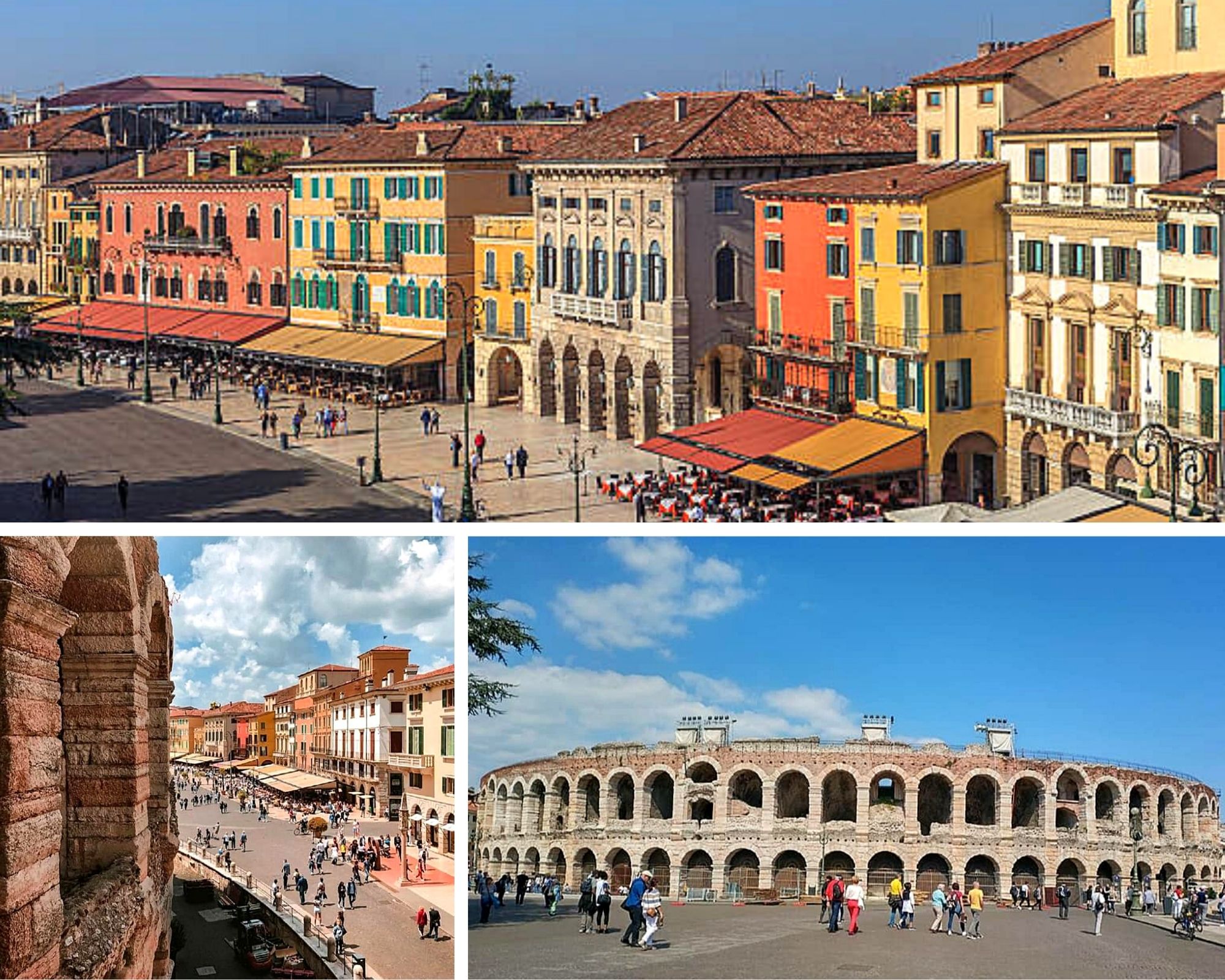



Verona is one of the major cities of art in Italy for its artistic and archaeological riches.

The city has a complex development, but two masonry works accentuate the division between the Roman and the modern part (up to the second half of the nineteenth century): on one side the Roman walls that surround the heart of the city between Porta Borsari, Porta Leoni and the Gallieno walls, on the other the so-called inner ring road with Renaissance forts (completed under the Austrians).

In ancient Verona the restorative work of Cangrande della Scala is sensitive: the strong visual impact given by the red color of the bricks of the splendid Gothic palaces is tempered by the wise use of ancient Roman white marble; this work is the result of the Scala policy of ideal return to imperial splendor.
Hence the new marble urbs, shining in the white paved square of Piazza delle Erbe, in the center of which the fountain of Madonna Verona towers brightly, made up of parts from the ancient Roman baths.

Verona having become one of the symbolic cities of love because the tragedy "Romeo and Juliet" is set there, an attempt was made to reconstruct what the two lovers' homes could be and the alleged "Juliet's House" is the result of an uninterrupted pilgrimage of tourists, so much so as to make it the major tourist attraction in Verona.
Verona
Address: Piazza Bra,1
Phone: +39 0444 99 47 70
Site:
https://www.comune.verona.it/nqcontent.cfm?a_id=1Location inserted by
BBCC